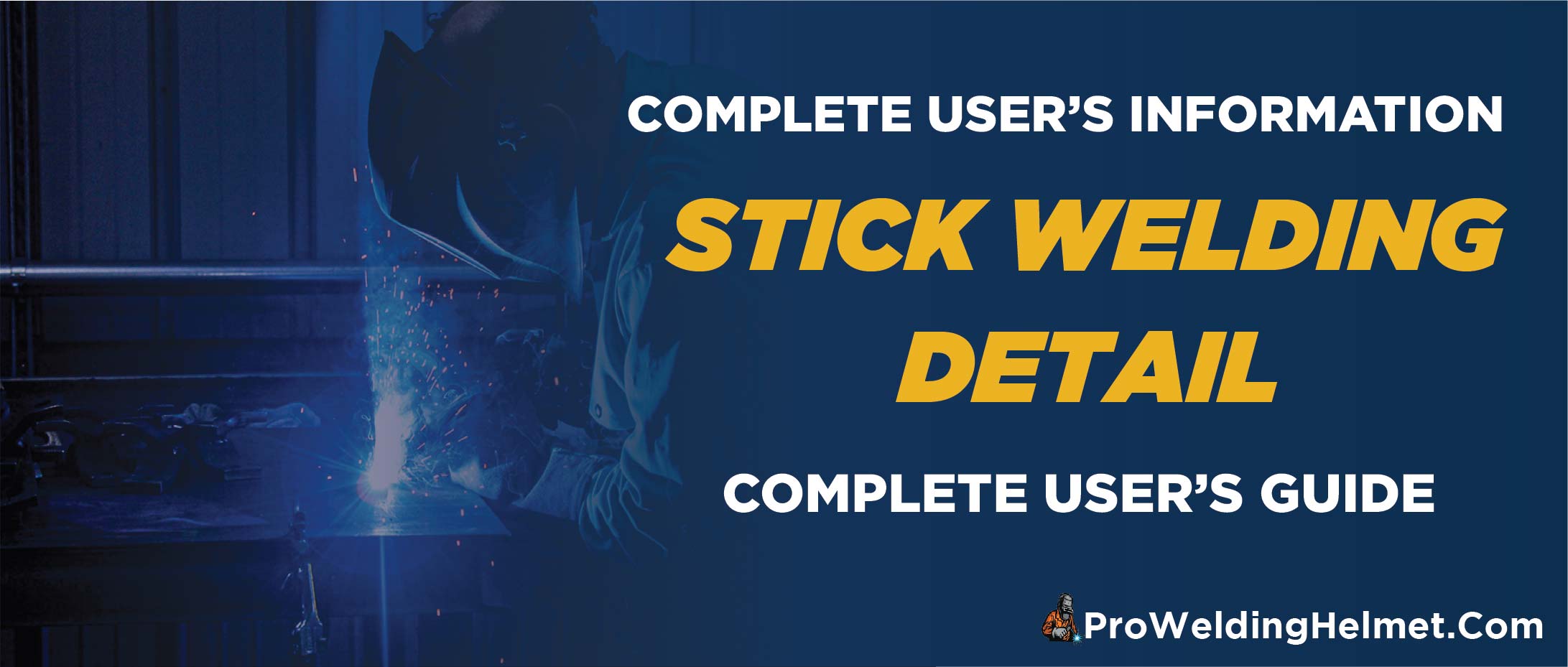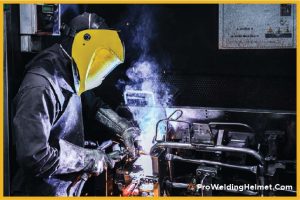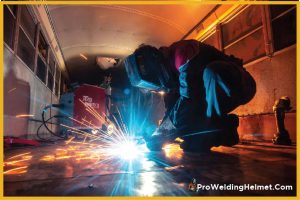Contents
What Is Stick Welding
Stick welding, also known as shielded metal arc welding (SMAW), is an arc welding process that uses a consumable electrode coated in flux to lay the weld.
The flux coating creates a shielding gas and provides a slag layer, protecting the weld area from atmospheric contamination.
Stick welding has been around for over 100 years and is used in various industries such as construction, shipbuilding, repair and maintenance, manufacturing and even art projects.
It is most commonly used for non-critical applications or when insufficient power is available for MIG or TIG welding. Stick welding can be done with either AC or DC. Depending on the material being welded, one may be better suited.
Stick welding is a relatively economical and portable process that is easy to learn but difficult to master. It requires experience, practice and skill to produce quality welds safely.
With the proper technique, stick welding can be used for various applications, including mild steel, stainless steel, cast iron and aluminium.

How Does Stick Welding Work
Stick welding passes an electric current through a consumable electrode with a flux coating on the outside. The heat generated by the arc melts both the base metal and the consumable electrode, forming a molten pool of weld metal. As this pool cools, it develops into a strong joint between two pieces of metal.
The flux coating on the electrode creates a protective gas shield which shields the weld area from atmospheric contamination and provides slag overtop of the weld to protect it from oxidation while cooling.

Additionally, as you move along with your weld, the flux will be consumed, providing additional protection for your workpiece.
Stick welding is relatively simple compared to other arc welding processes since only one tool (the stick) is needed to perform the weld.
It is important to note that stick welding is unsuitable for all applications and should only be used when other processes are not available or practical.
Stick welding also requires a higher skill level than other arc welding processes due to its inherent risks. It is essential to practice and understand proper safety measures before attempting any welding, mainly stick welding. However, with the proper technique and safety precautions, you can produce reliable welds with this versatile process.
By understanding what stick welding is and how it works, you can determine if it is the right choice for your needs. Whether you’re a beginner or an experienced welder, stick welding can be a great way to produce quality welds.
With the proper technique and safety precautions, you can make reliable joints with this popular welding process.
Equipment Used In Stick Welding
Stick welding requires only a few pieces of equipment.
- An arc welding power source,
- An electrode holder,
- An electrical cable
- A ground clamp
The power source is responsible for providing the current to create the weld. It can be either AC or DC depending on your needs. The electrode holder is used to hold the consumable electrode in place while it is being used.
The electrical cable is connected from the power source to the electrode holder and carries electricity from one point to another.
Finally, the ground clamp provides a path for excess electricity and helps protect against electric shock during use. Together, these components create an arc that melts both base metal and consumable electrode together, forming a solid joint between two pieces of metal.
Safety Precautions When Stick Welding
Stick welding has several safety hazards that must be addressed to prevent injury or death. Always wear the proper personal protective equipment (PPE), such as a welding helmet, gloves and apron, while working with electricity. Before beginning welding work, it is also essential to ensure that all electrical components are properly grounded.

It is also necessary to ensure there are no flammable materials in the vicinity of where you plan on performing your welds, as these can easily ignite if sparks fly into them during the process.
Finally, you must understand the safety protocols for your workplace before beginning any welding work.
Stick welding is a versatile and reliable process that can produce strong joints in metal pieces when used correctly. With the proper safety precautions and techniques, it can be a great way to create professional welds for any project.
Always follow the appropriate safety protocols and wear the necessary PPE when working with electricity to ensure everyone’s safety during the welding process.
What Are The Applications Of Stick Welding
Stick welding is a commonly used arc welding process that produces solid and reliable joints in metal pieces. It is typically used to fabricate large structures such as bridges, buildings, ships and other heavy equipment.
Stick welding is often used to weld parts for vehicles, machinery and pipelines. In addition, it can be used to repair or restore older pieces of metalwork.

The versatility of stick welding makes it suitable for many applications. It is ideal when tight joints are required and when working with thick materials or rusty metals.
Additionally, since only one tool (the electrode) is needed to perform the weld, it can save time on jobs that require multiple welds or intricate shapes.
Finally, stick welding requires relatively little set-up and can be used in various locations, making it an excellent choice for many applications.
Stick welding is an effective and reliable process that can produce strong welds in metal pieces of various shapes and sizes.
With the proper safety precautions, techniques and equipment, you can create quality welds with this popular welding method.
Advantages Of Stick Welding
- Provides efficient indoor and outdoor welding.
- Works well with rusty metals and thick materials.
- Requires minimal set-up time.
- Produces strong welds with good heat penetration.
- It is a versatile welding process that can be used for various applications.
- It Can be used in difficult-to-reach locations or at awkward angles.
- Creates high-quality welds with little splatter and spatter buildup.
- Advantages over other welding methods, such as MIG, TIG, etc., include no shielding gas required, low-cost equipment and ease of use.
- Stick welding produces a large arc that isn’t influenced by either temperature or wind.
- You don’t need granular flux or auxiliary gas shielding.
Disadvantages Of Stick Welding
- You need help to easily mechanize the stick welding procedure as it’s considered manual. Difficult to produce precise welds and joints.
- The skill level required for proper operation is much higher than in other welding processes.
- Welding rods have a limited shelf life, requiring frequent replacement of electrodes.
- It produces more fumes and spatters than other welding processes.
- It produces higher heat levels, which can distort the metal being welded.
- Slag must be removed from the finished weld, which can generate additional work for the operator.
- With stick welding, it’s hard to weld metal with a thickness of fewer than ⅛ inch.
Final Summary
Stick welding is an efficient and reliable process that can produce strong welds in metal pieces of various shapes and sizes.
With the proper safety precautions, techniques and equipment, you can create quality welds with this popular welding method. Stick welding offers many advantages over other welding methods, such as no shielding gas required, low-cost equipment and ease of use.
However, it has some drawbacks, including difficulty producing precise welds and joints, high skill requirement for operation and more fumes and spatters than other processes.
Despite these minor disadvantages, stick welding remains a popular choice for many projects due to its versatility and reliability.